The True Bantams.
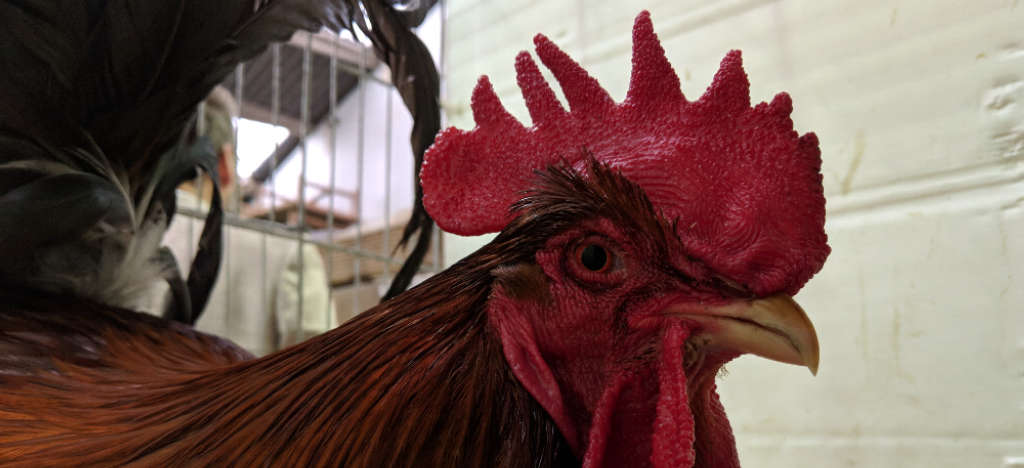
What is a true Bantam chicken?
A true bantam is a small breed of chicken that has no corresponding or matching large fowl in it's family.
Painstaking breeding by fanciers, selecting for the two genes that cause miniaturisation, has allowed them to breed smaller but otherwise identical chickens. This is not the case with true bantams as there was not a larger version to start from and a lot of the true bantams are older than most modern breeds of chicken.
Bantam chickens have been created from existing breeds that were originally far larger and as such are smaller versions of their larger counterparts. The bantam Barnevelder for instance, looks just like the large fowl, only around a third of the size.
Another distinguishing feature of the true bantams is the are exclusively for the show bench and although the eggs are edible they do not produce many and they are very small.
Below: This is a Serama bantam, the smallest breed of chicken.
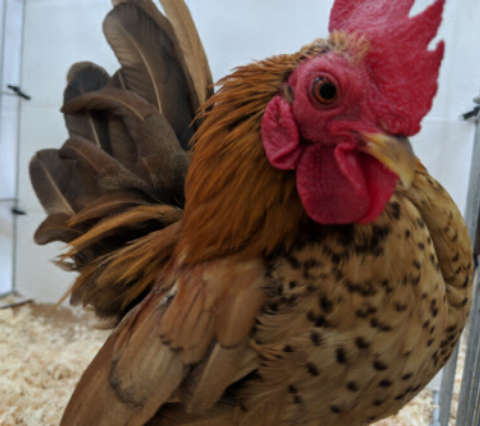
True bantam breeds have no large version of the same breed, unlike how Poodles of the dog world have a closely related larger relative. They’re the few chickens that only come in Extra Small with no large fowl counterpart.
On the other hand, many Standard-sized breeds of chicken have a Bantam-sized counterpart. This includes the most common breeds. Even those tall, lean white Leghorn hens that lay your store-bought eggs have a tiny cousin of their own.
According to the American Standard of Perfection, the list of true bantam breeds is much smaller than the chicken Breeds available in both sizes.
The true bantams all lay a small to very small white or light cream egg and some are exceptionally rare.
True bantams are also smaller than nearly all other bantams, some as little as 600 grams.
A short history of the True Bantam:
These delightful little birds were developed almost exclusively in central Europe and Asia. Records of some go back many hundreds of years. We know that the Pekin was not introduced into England until the 1860's or so. Introduced here just means we stole them from the Chinese during the Opium wars.
Records only describe what we now call true bantams since the middle 1800's and mostly from zoo records.
We know the Chinese and Japanese have been keeping small chickens for many hundreds of years and those like the Nankin bear the name of the area they came from. The Japanese bantam appears to be a truly ancient type.
It is likely that these small birds were the sport of the wealthy as they are not productive enough for the average farmer who has to make a living from his flock. They could also be kept in very small areas and required less in the way of feed.
List of true Bantam breeds:
Below is a complete list of Bantam Breeds, with a brief description of each:
Japanese Bantam:
These delightful little birds are one of the oldest Bantam Breeds around. They have the shortest legs of any breed, and they possess a grand, elegantly fanned tail that’s angled directly upward, often towering above their head.
Their wings hang low, and point slightly backward, brushing the ground like a delicate skirt behind them.
Below: A Japanese Bantam hen.

Standard colours: Many including black tailed white, black tailed buff, buff Colombian, white, black, birchen grey, silver grey, mottled (various), blue, lavender, cuckoo, red, tri-coloured, wheaten bred, blue red, silver and gold duckwing
Weight: Male – < 600g Female - < 510g.
Nankin Bantam:
Another bantam of Asian origin, most probably Java or India. This breed comes in a single colour, buff, but has 2 varieties distinguished by their differing combs – single or rose comb.
Both sexes have black tails and both varieties have slate grey legs. This is my Nankin cockerel below.
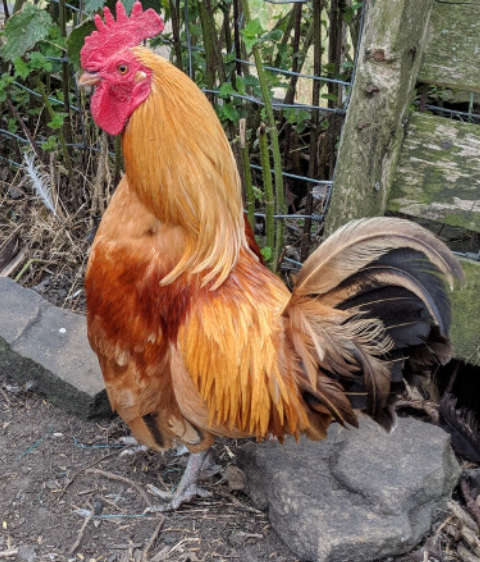
Dwindling popularity now sees this breed listed as critical even though this neat looking bird has many desirable features including a friendly, home loving personality, good egg production and a tendency to be less flighty than some other bantams.
The Nankin is one of the oldest true bantams and has been fundamental in the formation of several other more recently standardised breeds such as the Sebright. The name is thought to originate from its similarity in colour to Nankin cloth although others believe it is simply after the Chinese city of Nanjing (where the cloth was originally produced) and where they were imported from.
Standard colours: Buff
Weight: Male – 680g Female – 625g
Conservation status: critical
The Serama Bantam:
With an upright tail, wings tightly held at their sides, a head held high and a puffed chest; the Serama is a distinguished Chicken with a unique stature not unlike that of a proud soldier.
They happen to be one of the smallest breeds, and currently hold the record for the most lightweight Bantam Breeds.
While their early ancestry dates back as far as the 1600s, the modern “Serama” was produced in the late 1900s. It didn’t even arrive in the United States until as recently as 2004.
Below: A Serama hen on show.
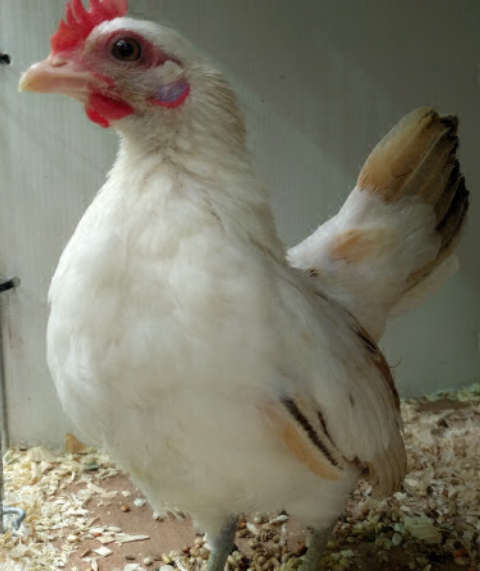
Colours: All are acceptable according to the standard but popular colours include white, black, buff, red, partridge, wheaten, mottled, spangled and duckwing
Weight: Male – up to 500g Female – up to 500g
Booted Bantams:
These beautiful and rare Bantams have a complicated history, split between The Netherlands and Germany. They’re known under entirely different names in each place – Sabelpoot, and Federfuflge Zwerghuhner, respectively.
Booted Bantams are available in a vast array of color varieties in Germany and The Netherlands, but Black and White are the most commonly found in the UK.
All colours have been rare in the United States due to the imported amounts being far surpassed by Barbu d’Uccles in 1911. Booted bantams have neat, flat neck feathering and no beard, distinguishing them from the D’Uccles.
Below: A booted Bantam in a show cage.
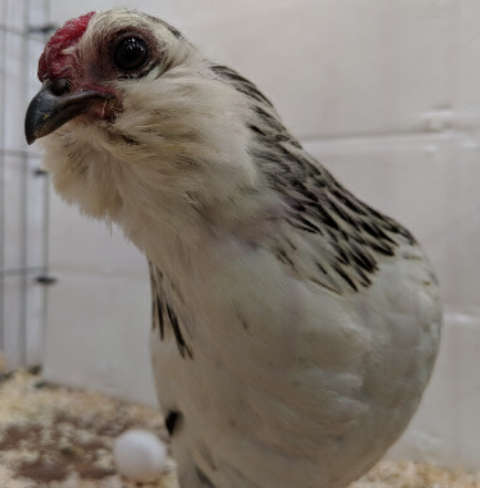
Barbu D’Uccle Bantams, and other related Belgian Bantams:
Confusingly the term Belgian bantam is an umbrella term for a group of 6 (5 standardised and one undergoing standardisation) closely related but distinct varieties developed in Belgium.
The Belgian bantams are tame, easy to look after and inquisitive.
All of these come in a large variety of colors and sometimes intricate patterns. Belgian Bantams are all similar in many ways, and originate very closely to one another. However, they come in five known distinct types:
Barbu d’Uccle. By far the most common Belgian bantam, with feathered legs and a thick, fluffy “beard” underneath their beak. Bearded Uccle with feathered legs.
Barbu d’Anvers. A naked-legged, but similarly bearded breed. The original Barbu d’Anvers is a truly ancient breed dating from at least the 1700s and is a small, clean-legged, rose-comb bantam with tiny or absent wattles and many colour variations.
Barbu de Watermael. Another bearded bird, but with a differently “rose” shaped comb and a small, back-swept tuft of feathers protruding from their heads. Bearded Watermael, clean legs.
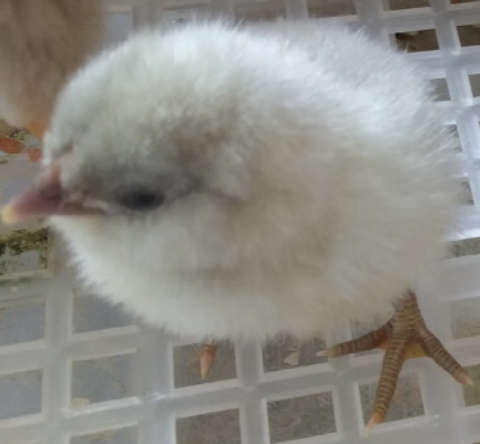
Above is a blue d'anvers chick.
The Barbu d’Everberg or Rumpless d’Uccle and Barbu de Grubbe or Rumpless d’Anvers. Both of these are the tailless counterparts to the D’Uccle and D’Anvers, respectively.
Belgian bantams are old-established True Bantams, without counterparts in large breeds. All of these breeds and varieties have many colour variations, and are intricate and attractive.
Standard Colours: Millefleur, Porcelain, Cuckoo, Black Mottled, Lavender mottled, Black, White, Blue, Lavender, Normal Quail, Blue Quail, Lavender Quail, Silver Quail and numerous non-standard colours.
Weight: Male – 700-900g Female – 600g-800g (Watermael the lightest, D’Uccle the heaviest)
Conservation status: mixed
Dutch Bantams:
The Dutch Bantam is known as the De Hollandse Krielan in its native country, has existed for a long time. However, a club for the breed was not formed until the late 1980s, and the breed didn’t arrive in the United States before the late 1960s.
Below: A beautiful Dutch Bantam hen.

The Dutch Bantam has steadily gained in popularity, now with thirteen colour varieties recognised and many more still being developed in Holland.
Dutch bantams are also practical chickens, being especially hardy, good layers for their size. They are desirable family pets due to their reputation for thriving on loving care and easy keeping in confined space.
Standard colours: black, white, various colours of partridge, blue, Pyle, lavender, salmon, crele, cuckoo
Other colours: buff Colombian, Colombian, millie fleur, quail, blue tailed buff Colombian, wheaten, isabella
Weight: Male – 550g Female – 450g
The Pekin Bantam:
Although these are similar in appearance to the larger Cochin chicken, the Pekin is a True bantam breed all its own. It has a long history based in China that bears no relationship with the Cochins.
It owes its name to Pekin, the place from which it was imported in the mid-1900s. These remarkably gentle and sweet-tempered birds come in a full range of colours, and melt your heart with their endearingly stout, round, and fluffy appearance.
Below: A Pekin Bantam hen.
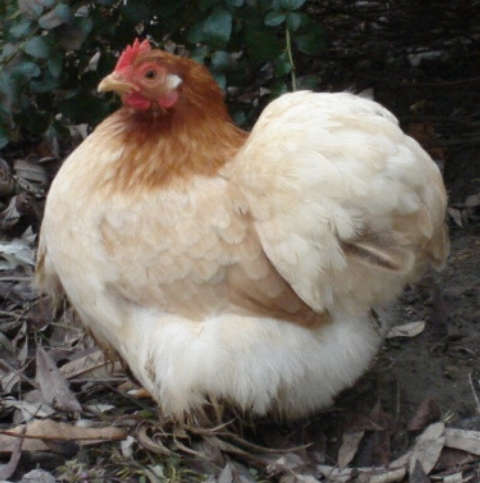
Standard colours: Black, blue, buff, cuckoo, mottled, barred, columbian, lavender, white, birchen, partridge, silver partridge, millefleur
Weight: Male – 680g Female – 570g
The Rosecomb Bantam:
With their compact, streamlined silhouette, neatly uniform feathers, dignified stature and distinct “Rose” shaped comb, the Rosecomb bantam is a stunning example of selective breeding for appearance.
While they make poor utility birds, they are a favourite among Bantam Chicken exhibitionists. All colours are extremely attractive with the clearest defining characteristic being large white earlobes and a long, neat rose comb tapering to a point.
Standard colours: black, blue, white, black-breasted red, birchen, columbian
Other colours: buff columbian, buff, blue-red, black mottled, buff mottled, Pyle, millefleur, lemon porcelain, cuckoo, lavender
Weight: Male – 570g-620g Female – 450g-510g
Sebright Bantams:
The Sebright was developed over 200 years ago by Sir John Sebright. Hailing from Hertfordshire, Pocket Farm’s home county, Sebright’s are available in only 2 colour variations, gold and silver, with each feather delicately laced with black.
Below: One of my Sebright cockerels.
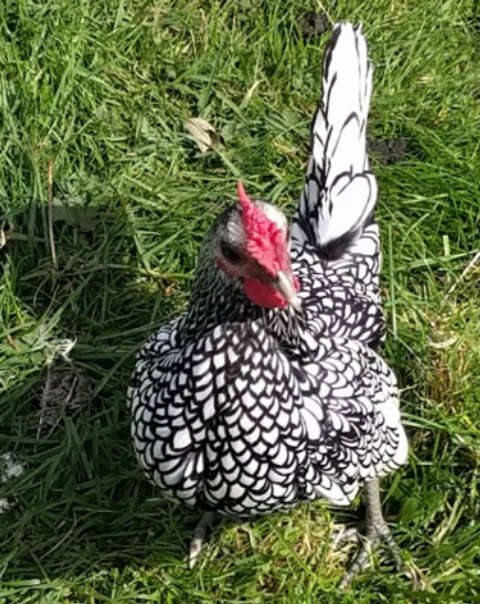
Another strictly ornamental breed, the Sebright is one of the most easily recognisable and favoured breeds of chicken. They carry themselves proudly and possess a Rose comb.
They are best known for elaborate “laced” feathers, each intricately etched with a black outline. It is also the only breed of chicken which lacks the long and sharp “sickle” feathers that distinguish roosters from hens. Originating in Britain within the 1900s, the Sebright is a breed that has quickly gained in popularity within the United States.
The males are hen feathered meaning they do not have the long sickle tail feathers common to most male chickens.
Standard colours: gold-laced, silver-laced
Weight: Male – 620g Female – 510g
Ohiki:
Developed on the Japanese island of Shikoku the name translates literally as ‘small dragging’ after the exceptionally long tails sported by older males of this short legged breed. These can easily become dirty so consideration should be given to the environment provided. No UK club or society currently exists.
Standard colours: white, black breasted red, silver duckwing
Weight: Male – 900g Female – 680g
Conservation status – rare
German bush fowl:
Sometimes known as the Javanese bantam. A super hardy green egg layer.
Below: A young German bush fowl hen.
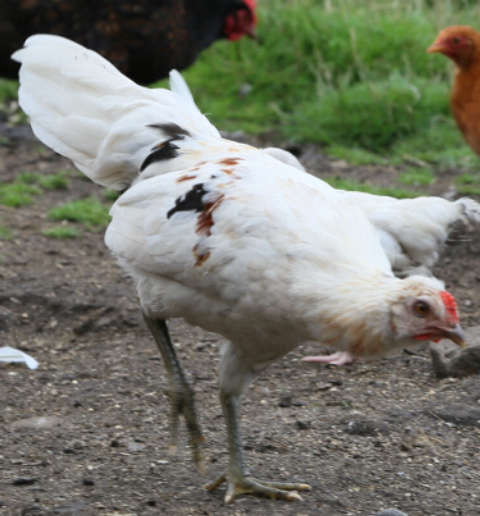
Silkie:
Although several sizes now exist this was originally just a bantam.
The beguiling, fluffy Silkie is thought to originate from China Marco Polo wrote of ‘fur-covered fowl with black skin’ has a topknot and is unusual in that it has five toes instead of four. Silkies are gentle birds that can’t fly and make excellent broodies.
Below: A Lavender Silkie.
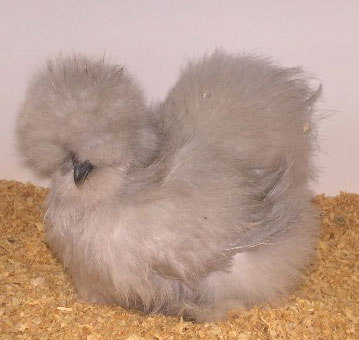
They’re long-lived, with an average lifespan of 12-14 years. They can be bearded or non-bearded, in grey, blue, buff, white, black and partridge.
